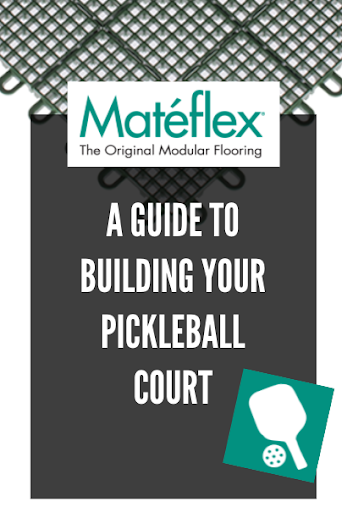Pickleball Court Construction-- Expert Installment for Your Dream Court
Pickleball Court Construction-- Expert Installment for Your Dream Court
Blog Article
Sustainable Practices in Pickleball Court Construction You Should Know
As the popularity of pickleball continues to increase, so also does the need for sustainable methods in court building and construction. This method not only addresses ecological issues however additionally boosts the longevity and performance of the courts. From choosing eco-friendly products to carrying out effective water drainage and energy-saving lighting options, there are various strategies to think about. Yet, the effect of these methods prolongs far beyond the court itself. Understanding exactly how each element adds to a more sustainable future welcomes further expedition right into the elaborate equilibrium between leisure development and environmental stewardship.
Selecting Eco-Friendly Materials
Picking green materials is a vital action in the construction of sustainable pickleball courts. The choice of lasting materials not only minimizes ecological impact yet also enhances the durability and performance of the court. Key products include recycled rubber for the surface area, which uses superb durability and shock absorption while drawing away waste from garbage dumps.
In addition, utilizing in your area sourced materials lowers transportation emissions and sustains local economic situations. Pickleball court construction. Utilizing native woods for fencing and seats can supply a lasting aesthetic while guaranteeing resilience against the components.
Incorporating absorptive materials for court foundations can even more add to sustainability by permitting natural water drainage and decreasing runoff. These choices not just secure neighborhood ecosystems yet also promote much healthier play environments.
Effective Drainage Solutions
While the choice of environment-friendly materials is crucial, carrying out efficient drain remedies is similarly essential for preserving sustainable pickleball courts. Appropriate water drainage not only safeguards the court surface area from water damages yet also reduces disintegration and overflow, advertising ecological stability.
Effective water drainage systems can consist of absorptive paving, which enables water to penetrate the ground instead of pooling on the surface area. This lowers the possibility of standing water, which can lead to mold and other maintenance concerns. Furthermore, integrating purposefully placed drainage channels and swales can guide excess water away from the court area, making sure a dry having fun surface and avoiding dirt disintegration.
Using native plants in the landscape design around the courts can further enhance drainage by soaking up excess water and minimizing overflow. These plants require less irrigation and advertise biodiversity, aligning with sustainable techniques.
In addition, it is essential to routinely keep the water drainage system to guarantee its lasting effectiveness. This includes cleaning particles and tracking for obstructions. By prioritizing efficient water drainage solutions, pickleball court manufacturers can substantially add to the sustainability and durability of the facility, inevitably profiting both players and the setting.
Energy-Efficient Lighting Options
As the demand for pickleball remains to expand, integrating energy-efficient lights choices into court design has come to be increasingly essential for sustainability. Standard illumination systems frequently take in too much power, adding to higher operational costs and environmental effect. Therefore, embracing contemporary, energy-efficient modern technologies is necessary for both brand-new constructions and renovations.
LED (Light Emitting Diode) lighting stands apart as a leading choice due to its long life and power savings (Pickleball court construction). Compared to traditional illumination, LEDs utilize roughly 75% less power and can last approximately 25 times much longer, considerably lowering maintenance prices. The directional nature of LED lights minimizes company website light air pollution, guaranteeing that illumination is concentrated on the court rather than bordering locations.

Sustainable Surface Area Alternatives
Discovering sustainable surface area options for pickleball courts has actually acquired traction amongst gamers and building contractors alike. The emphasis on green products not only lines up with the growing environmental understanding but additionally improves the performance and longevity of the courts.
This material gives excellent shock absorption, minimizing the threat of injuries for gamers while promoting sustainability. These floor tiles are very easy to mount and change, and their adaptability allows for numerous court setups.
Natural lawn courts are also becoming a sustainable option, advertising biodiversity and lowering the warmth island effect. They need routine maintenance and water, which might not straighten with all sustainability goals.

Water Preservation Techniques

One more reliable method entails the setup of rain harvesting systems. These systems collect and save rain for use in keeping court surfaces and landscape design. This strategy not just preserves drinkable water but additionally minimizes reliance on municipal blog here sources.
Additionally, utilizing drought-resistant landscaping around the courts is vital. Native plants need much less water and are much better adapted to local environment conditions, thus reducing general water usage. In addition, using efficient irrigation systems, such as drip irrigation, ensures that water is provided straight to plant roots, decreasing dissipation and waste.
Verdict
Integrating sustainable practices in pickleball court building and construction substantially adds to environmental conservation and resource performance. Utilizing eco-friendly materials, carrying out efficient water drainage remedies, and adopting energy-efficient lighting choices can greatly reduce ecological impact. Moreover, discovering lasting surface area options and utilizing water conservation techniques boost the total sustainability of these entertainment facilities - Pickleball court construction. By focusing on these practices, the building and construction of pickleball courts can align with more comprehensive environmental goals while advertising longevity and capability within communities.
As the popularity of pickleball continues to climb, so too does the demand for lasting techniques in court construction.Selecting green products is a crucial step in the building of sustainable pickleball courts. By prioritizing energy-efficient illumination choices, pickleball court here are the findings manufacturers can add to a much more lasting future while fulfilling the needs of stakeholders and gamers alike.Including lasting surface area choices not just enhances the efficiency of pickleball courts yet likewise paves the way for implementing efficient water conservation methods.Integrating sustainable methods in pickleball court construction significantly contributes to environmental preservation and source effectiveness.
Report this page